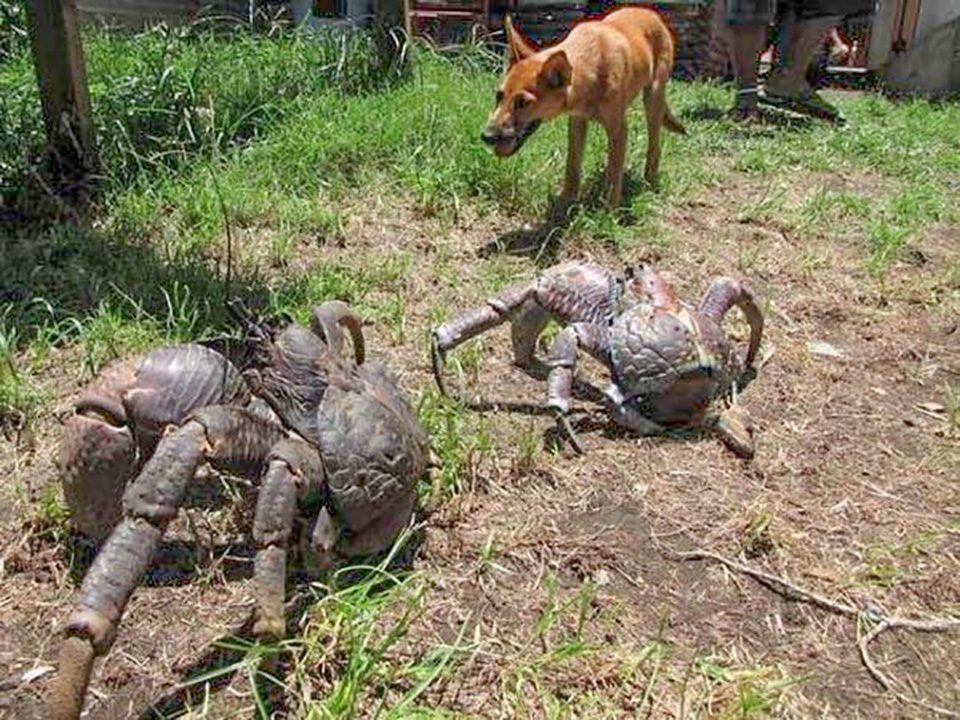The coconut crab is a species of terrestrial hermit crab, also known as the robber crab or palm thief. It is the largest land-living arthropod in the world, and is probably at the upper size limit for terrestrial animals with exoskeletons at current conditions during the Holocene with a weight up to 9.0 lbs. It can grow to up to 3 ft 3 in in length from leg to leg. It is found on islands across the Indian Ocean, and parts of the Pacific Ocean as far east as the Gambier Islands and Pitcairn Islands, mirroring the distribution of the coconut palm; it has been extirpated from most areas with a significant human population, including mainland Australia and Madagascar.
The coconut crab is the only species of the genus Birgus, and is related to the terrestrial hermit crabs of the genus Coenobita. It shows a number of adaptations to life on land. Like other hermit crabs, juvenile coconut crabs use empty gastropod shells for protection, but the adults develop a tough exoskeleton on their abdomens and stop carrying a shell. Coconut crabs have organs known as branchiostegal lungs, which are used instead of the vestigial gills for breathing, and after the juvenile stage they will drown if immersed in water for too long. They have an acute sense of smell, which has developed convergently with that of insects, and which they use to find potential food sources.
Adult coconut crabs feed primarily on fruits, nuts, seeds, and the pith of fallen trees, but they will eat carrion and other organic matter opportunistically. Anything left unattended on the ground is a potential source of food, which they will investigate and may carry away—thereby getting the alternative name of “robber crab.” The species is popularly associated with the coconut palm, yet coconuts are not a significant part of its diet. Although it lives in a burrow, the crab has been filmed climbing coconut and pandanus trees. No film shows a crab selectively picking coconut fruit, though they might dislodge ripe fruit that otherwise would fall naturally. Climbing is an immediate escape route (if too far from the burrow) to avoid predation (when young) by large sea birds, or cannibalism (at any age) by bigger, older crabs.
Their lifespan may be over 60 years.The coconut crab is eaten in parts of Southeast Asia and the Pacific Islands and is considered a delicacy and an aphrodisiac, and intensive hunting has threatened the species’ survival in some areas.
